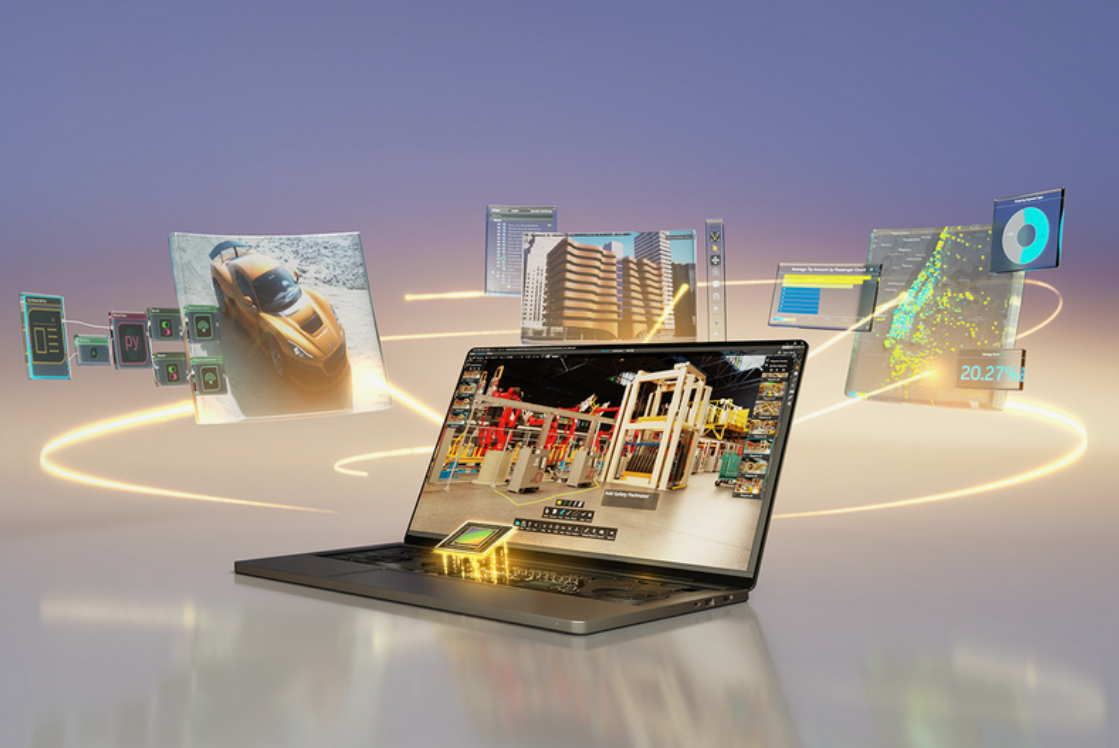What if your PC could go from sluggish to lightning-fast, handling even the most complex tasks without breaking a sweat?
Imagine smoothly running 4K video edits, playing the latest games at ultra settings, and executing complex data simulations all at once.
This isn’t a futuristic dream—it’s a reality,
thanks to RTX acceleration. With its advanced technology built into NVIDIA’s RTX graphics cards, you can now unlock a whole new level of performance, transforming your regular PC into a high-speed powerhouse.
RTX acceleration isn’t just for gamers—it’s a game-changer for anyone who wants to boost their PC’s performance, from content creators to AI researchers.
Let’s dive into how RTX acceleration works, how it can supercharge your PC, and why it’s the ultimate upgrade for power users.
What is RTX Acceleration?
RTX acceleration uses the power of NVIDIA’s RTX graphics cards to speed up a variety of tasks, from rendering graphics to running AI-driven processes. With a combination of CUDA cores, Tensor cores, and RT cores, RTX cards optimize and accelerate tasks, making them perfect for gaming, video editing, 3D rendering, and machine learning.
This GPU fits best with the higher grade RAM devices. For example, 1 TB SSD IdeaPad Pro 5 Gen 9 16 inch AMD laptop is a great option. It pairs well with RTX acceleration, delivering smooth performance for even the most demanding workloads.
The best part is RTX-capable GPUs use dedicated hardware to enable real-time ray tracing in games and other graphics applications.
Unlike traditional GPUs, RTX cards provide real-time ray tracing and DLSS (Deep Learning Super Sampling) technology, enhancing visual fidelity in games and professional applications.
The Key Components of RTX Acceleration
To fully understand how RTX acceleration boosts your PC’s performance, let’s break down the core components that enable this transformation:
1. CUDA Cores: The Heart of Processing Power
CUDA (Compute Unified Device Architecture) cores are parallel processors designed to handle massive amounts of computations simultaneously. RTX cards are equipped with thousands of CUDA cores, which allows them to accelerate tasks like image rendering, video encoding, and simulations.
- This is particularly beneficial for professionals working in graphic design, VFX, or AI development, where large datasets and complex calculations are common.
2. RT Cores: Real-Time Ray Tracing for Lifelike Graphics
Ray tracing is a groundbreaking technology that simulates the physical behaviour of light, producing realistic lighting, shadows, and reflections in 3D environments.
It’s a key feature for modern GPUs, such as the one in the IdeaPad Pro 5 16 inch R7 32 GB RTX 4050 laptop. With dedicated RTX cards featuring RT cores, the laptop handles real-time ray tracing effortlessly, offering a level of visual detail that was previously unattainable.
- This makes the laptop not only perfect for immersive gaming but also an excellent choice for industries like architecture, product design, and film production, where accurate visual representation is essential.
3. Tensor Cores: Powering AI and Machine Learning
The Tensor cores found in RTX GPUs are specialized processors designed for AI inference and deep learning tasks.
These cores allow RTX GPUs to run AI-based processes like image upscaling, object recognition, and speech processing much faster than traditional CPUs or even standard GPUs.
- With technologies like DLSS and AI denoising, RTX cards can boost performance in GPU-intensive applications without compromising on quality.
4. DLSS (Deep Learning Super Sampling): AI-Powered Upscaling
One of the most notable features of RTX acceleration is DLSS, which uses AI algorithms to upscale lower-resolution images in real-time. This allows your PC to render at a lower resolution while still achieving higher-quality visuals, resulting in smoother frame rates and less strain on your GPU.
How RTX Acceleration Transforms Your PC
Now that we understand the technical components of RTX acceleration, let’s explore how it can turn your regular PC into a high-speed workstation.
- Boosted Gaming Performance
If you’re a gamer, RTX acceleration is a game-changer. The addition of real-time ray tracing and DLSS transforms how you experience games. With RTX technology, light reflections, shadows, and textures are more detailed than ever before, creating a more immersive and lifelike gaming experience.
- Enhanced Video Editing and 3D Rendering
For content creators, RTX acceleration can drastically speed up video rendering and 3D modelling tasks. Whether you’re editing 4K videos, working with complex 3D scenes, or rendering high-resolution graphics, the CUDA cores and Tensor cores in RTX cards enable faster processing times.
- With AI-based denoising and ray tracing, you can create photorealistic graphics and animations with minimal lag.
- Powerful AI and Machine Learning
RTX acceleration is revolutionizing industries that rely on artificial intelligence and machine learning. Whether you’re training a deep learning model or running complex data simulations, the Tensor cores in RTX cards provide the computational power needed to tackle these demanding tasks efficiently.
- This is particularly beneficial for industries like healthcare, finance, and automotive design, where AI is increasingly being used to automate processes and analyze massive datasets.
Is RTX Acceleration Right for Your PC?
If you’re considering upgrading your PC to take advantage of RTX acceleration, it’s important to know what your system needs. While RTX cards deliver substantial performance improvements, they also require specific system requirements:
- A compatible PCIe slot: RTX cards are high-performance components and require a PCIe 3.0 or 4.0 slot.
- Sufficient power supply: RTX GPUs have high power demands, so ensure your power supply unit (PSU) can handle the load.
- Adequate cooling: Given the performance potential of RTX cards, cooling solutions (such as a high-end air cooler or liquid cooling system) are essential to prevent overheating.
Final Takeaways
RTX acceleration is more than just a buzzword—it’s a transformative technology that can take your PC to the next level. Whether you’re gaming, creating, or analyzing complex data, the combination of CUDA cores, RT cores, Tensor cores, and DLSS offers an unparalleled boost to your system’s performance.
With RTX acceleration, your PC will not only run faster but also handle more demanding workloads with ease, helping you stay ahead in a fast-evolving digital world.
















